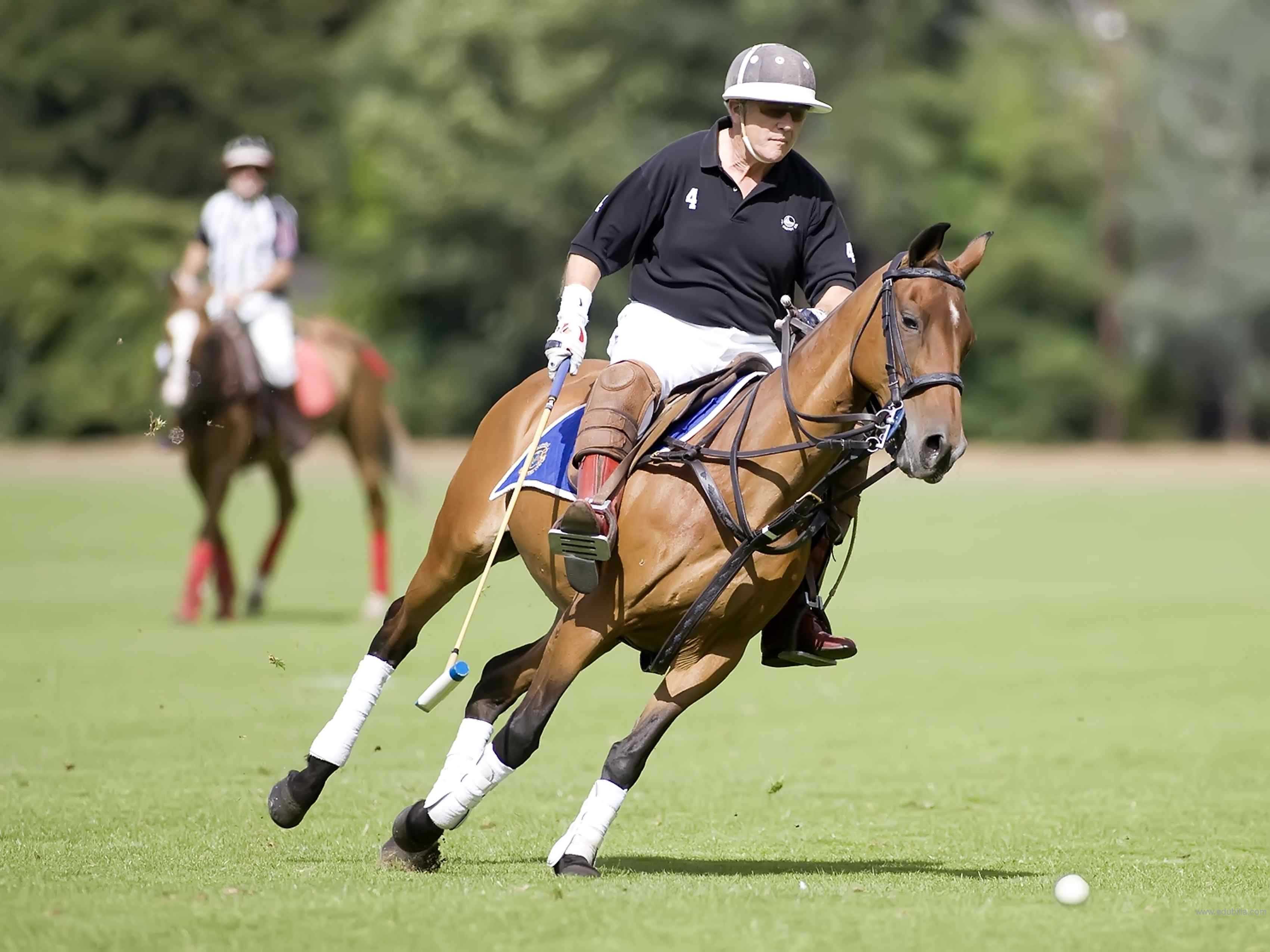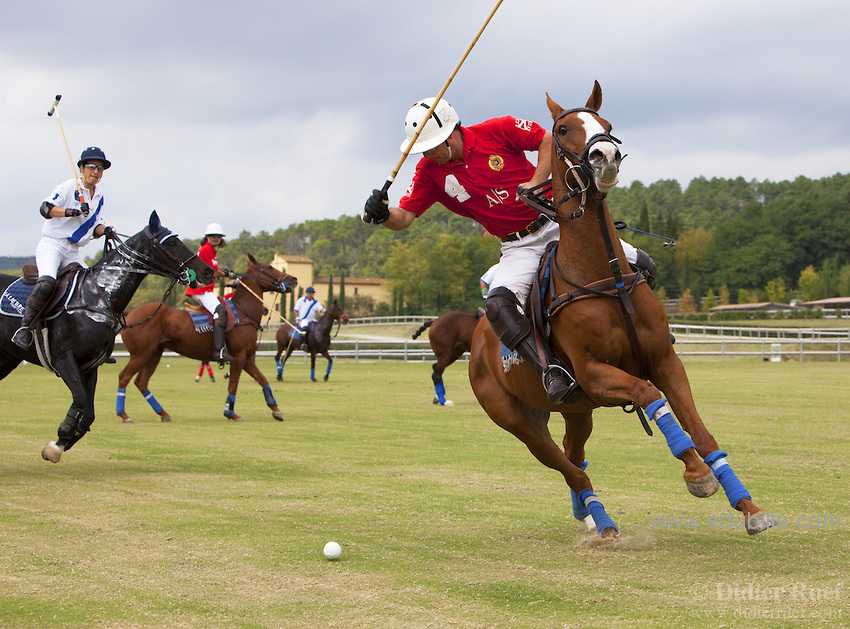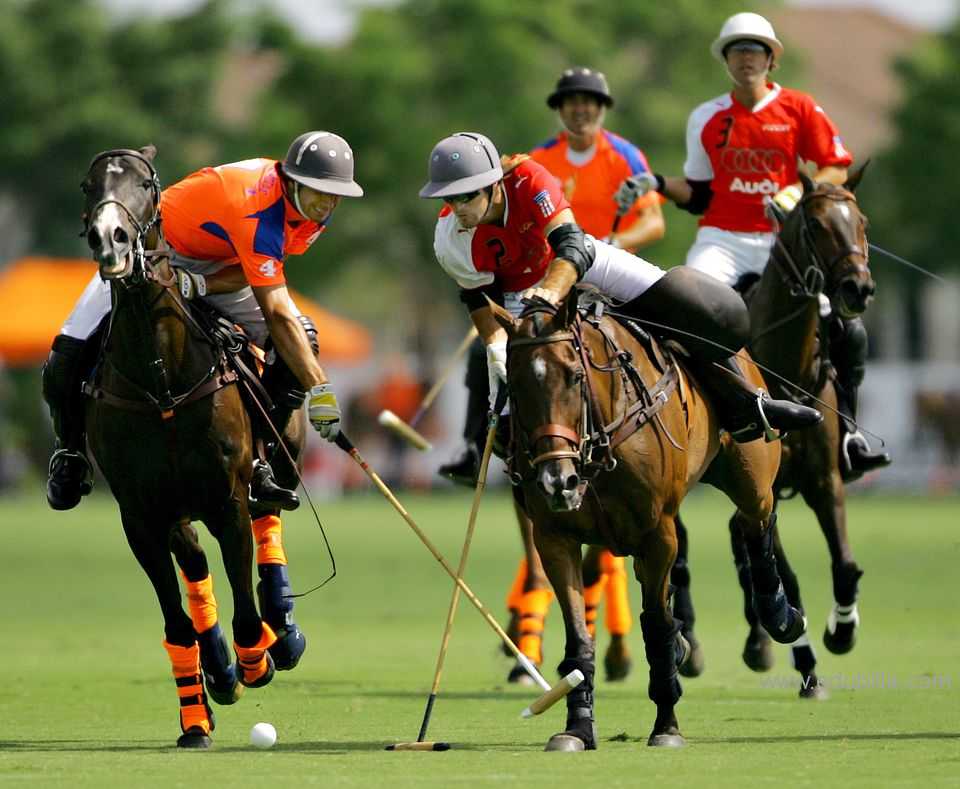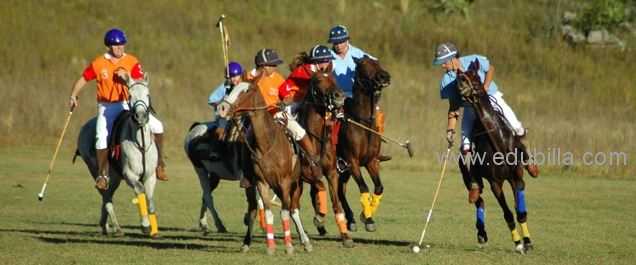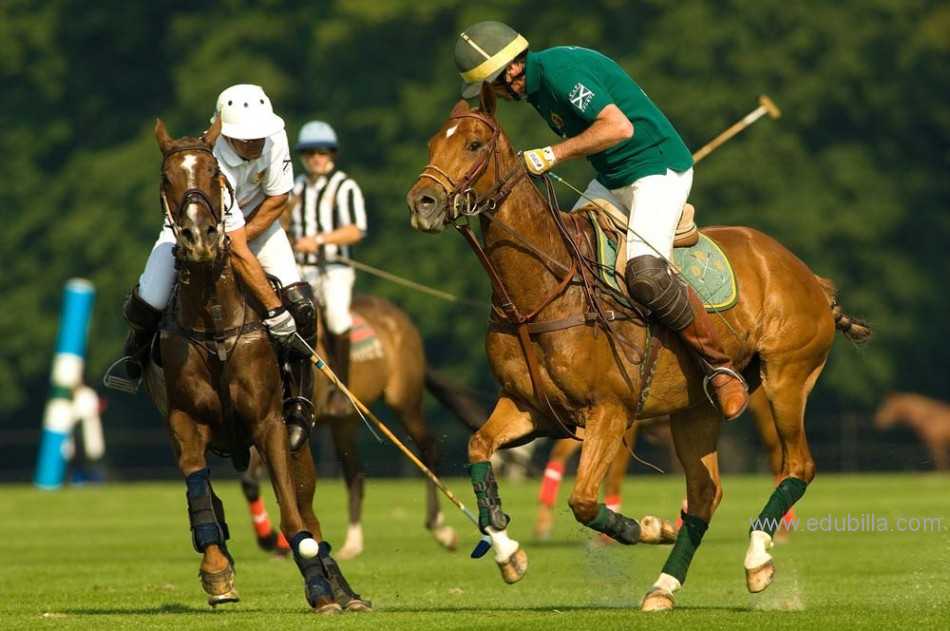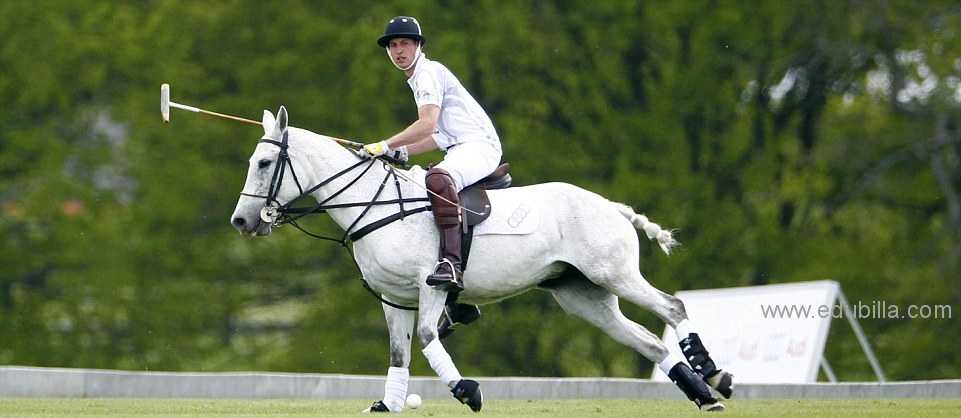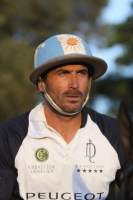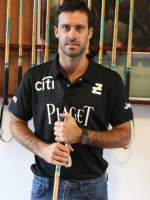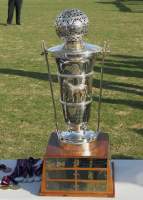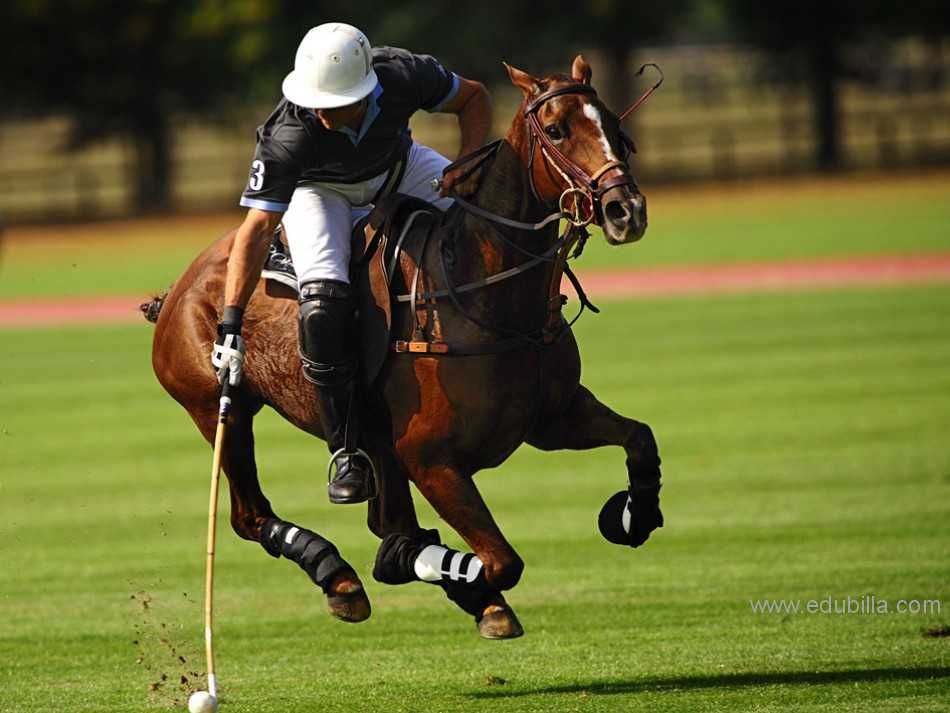
Overview Of Polo
Polo is a team sport played on horseback. The objective is to score goals against an opposing team. Players score by driving a small white plastic or wooden ball into the opposing team's goal using a long-handled mallet. The traditional sport of polo is played at speed on a large grass field up to 300 yards (274 meters) long by 160 yards (146 meters) wide, and each polo team consists of four riders and their mounts. Field polo is played with a solid plastic sphere (ball) which has replaced the wooden version of the ball in much of the sport. In arena polo, only three players are required per team and the game usually involves more maneuvering and shorter plays at lower speeds due to space limitations of the arena. Arena polo is played with a small air-filled ball, similar to a small soccer ball. The modern game lasts roughly two hours and is divided into periods called chukkas (occasionally rendered as "chukkers"). Polo is played professionally in 16 countries. It was formerly, but is not currently, an Olympic sport.
Game Rules
Teams:
Four players are on each team. Each player wears a numbered jersey, one through four, which indicates their position and responsibilities on the field.
•One – Mainly concerned with goal scoring – often played by the lowest handicapped player on the team.
•Two – Scorer, but greater defensive responsibilities then Number One.
•Three – Adept at scoring, playing defense and determining the strategy. Generally the team’s best player and captain.
•Four – Mainly a defensive player.
Time Periods:
A polo match is approximately one and one-half hours long and is divided into seven-minute time periods called chukkers. There are six chukkers in a high-goal match. Breaks between chukkers are three minutes long, with a 15-minute halftime.
Scoring:
Players score by driving the ball into the opposing team’s goal.
Ponies:
The mounts are full-size horses, ranging in size from 14.2 to 16 hands high at the withers, or horse’s shoulders, (one hand equals four inches) and weigh between 900 and 1100 lbs. Many polo ponies are thoroughbreds or thoroughbred crosses. They play for a maximum of two non-consecutive chukkers per match.
Players:
All players are assigned a handicap. Handicaps go from minus two to ten goals and are determined by competition committees in the countries where the players compete. There are only 12 or so ten goalers in the world.
Players must hit right-handed for safety reasons.
Game Control:
Two mounted umpires control the game; a midfield referee steps in when the umpires disagree. A flagman is positioned behind each goal; he indicates when a goal is scored.
Fouls:
The umpires generally call fouls for dangerous riding or use of the mallet. Penalty for a foul can be anything from a free hit to a free goal for the opposing team.
Field:
Polo fields are 300 yards long and 160 yards wide. An eight-yard wide goal, marked by ten-foot high goal posts, is centered on each end of the field.
Techniques defensives:
A player may use his mallet to block or interfere with an opponent’s swing by hooking the other player’s mallet. This is only allowed when a player is on the side where the swing is occurring or directly in front of or behind their opponent.
A bump, or ride-off, is used to break an opponent’s concentration, move him off the line of the ball or ruin his shot. When one player rides his pony alongside and physically connects with his opponent to lead him away from the ball, it is called a ride-off. A ride-off is permissible only at a 30-degree angle and at the horse’s shoulder.
Detailed Polo Rules Can Be Downloaded From Documents
Equipments Need For Polo
Equestrian helmet:
An equestrian helmet is a form of protective headgear worn when riding horses. This type of helmet is specially designed to protect the rider’s head during falls off a horse, especially from striking a hard object while falling or being accidentally struck in the head by a horse’s hoof.
Knee Guards:
Polo players have different preferences regarding the style, flexibility and weight of their polo knee guards.
Knee guards come in a variety of styles and quality. Find a pair that is comfortable, particularly when riding and swinging a polo mallet. It takes a couple of chukkers of polo and a little saddle soap to break in a new set of polo knee guards.
Riding Gloves:
Polo players have different preferences regarding the style, flexibility, and weight of their equestrian riding gloves.
Designed to fit like a second layer of skin, a riding glove provides a secure grip to aid in user confidence and performance. The palm is constructed with a tackified leather throughout its fibers. This tackiness is enhanced during humid conditions and remains tackified in hot temperatures. A simple hand washing is needed when gloves get dirty. A velcro wrist closure ensures a secure close fit.
Whip:
Equestrian polo whips have leather handles and straps that make them easy to grip while playing the sport of polo. The shaft is made from fiberglass and wrapped with nylon for durability and strength.
Ball:
A polo ball must be within the limits of 3 to 3-1/2 inches in diameter and 3-1/2 to 4-1/2 ounces in weight. A polo ball is usually made of a solid hard plastic. The most common polo balls in use are:
TEC Smooth Polo Ball
Texas Polo Ball
Polo Gear Argentine Polo Ball
Mallets:
Mallet Length:
Polo mallets range in size from 49 to 54 inches in length. The specific mallet length is usually on the head of the polo mallet.
Mallet Head:
Polo mallet heads are available in a variety of weights and shapes. Polo mallet heads are generally made of ash wood or maple. The striking head is 8 1/2 to 9 1/2 inches long. Different polo mallet head shapes enable a player to hit the ball in different ways. A polo mallet that is too heavy can eventually lead to muscle fatigue, wrist strain or even an injury.
Whippiness:
The "whippiness" of a mallet refers to the flexibility of its shaft. Varying degrees of shaft flexibility provide increased control. Polo players have individual preferences for the amount of whippiness they need to properly time the hitting of a polo ball. A more flexible shaft allows better hitting distance but less control when in close.
Shaft:
The stalks used for polo mallet shafts come from a cane called Manau, a member of the palm family. Searching for sunlight, this cane reaches a height of 600 feet in about 15 years.
Cane:
The cane itself is cut close to the root where it is the strongest. Nine foot lengths of the cane are boiled in coconut and diesel oil for about 10 to 15 minutes or until they turn yellow. Next, the boiled cane is cleaned in a washing mixture of sand and water. Then the canes are bundled and stacked to dry. The canes are heated over an open fire to straighten them and cured in a oven. The length of curing time is determined by the weight of the cane, and affects its long term strength and durability.
Boots:
Polo players have different preferences regarding the style, flexibility, and weight of their riding boots.
Polo Team Jerseys:
A numbered jersey with the team name and the player's position number in the team's colors must be worn in a polo match.
Spurs:
Spurs can be attached to loops fitted to a boot. Polo spurs are rounded to protect the polo pony from injury.
History Of Polo
The history of Imphal Polo ground is old as history of Manipur. The cradle of polo game or Sagol Kangei, as known locally, through centuries of Meitei civilization, Mapal Kangjeibung, the historic polo ground, rectangular in shape, is situated in the heart of Imphal city. This majestic game has always been an integral part of the Manipur ethos. It was, however, British influence and initiative that gave it global popularity.
The antiquity of Polo in Manipur is shrouded in a maze of myths and rituals. According to "Kangjeiroi", an ancient treatise on Polo, the game was introduced to the ancient Manipuris during the reign of king Kangba, centuries before the birth of the Christ. It also gives an account of the first recorded Polo match organised between the royal friends of "King Nongda Lairen Pakhangba" in 33 A.D. Legend also has it that during the reign of King Charairongba in 1697 A.D. team of 10 led by the King himself played a game against another team consisting of 100 players, with the smaller team winning the team.
The History of Polo at a Glance:
600 BC. The first recorded game took place between the Turkomans and Persians (the Turkomans won).
4th century AD.King Sapoor II of Persia learned to play, aged 7.
7th century AD. Polo spreads from China to Japan
16th century AD. A polo ground (300 yards long and with goal posts 8 yards apart) was built at Ispahan, then the capital, by Shah Abbas the Great. The Moguls were largely responsible for taking the game from Persia to the east and by the 16th century the Emperor Babur had established it in India. Polo was revived in Japan by the 8th Shogun, Tokugawa Yoshimune (1684-1751) and was played until early 20th century. It was the favourite sport of the last Shogun who surrendered power to the Emperor in 1868.
1850s. British tea planters discovered the game in Manipur (Munipoor) on the Burmese border with India.
1862. The first polo club in the world was formed by British tea planters at Silchar, west of Manipur. Calcutta Polo Club, the oldest existing polo club, was founded.
1868. Malta Polo Club founded due mainly to army and naval officers stopping off there on their way home from India.
1869. Edward "Chicken" Hartopp, 10th Hussars, read an account of the game in The Field, while stationed at Aldershot, and, with brother officers, organised the first game - known then as "hockey on horseback"- on a hastily-rolled Hounslow Heath against The 9th Lancers. The 1st Life Guards and the Royal Horse Guards were quick to follow suit on grounds at Hounslow and in Richmond Park; and then on a small ground near Earl's Court known as Lillie Bridge.
1872. The first polo club in England was Monmouthshire, founded by Capt. Francis "Tip" Herbert (1845 - 1922), 7th Lancers, at his brother's seat, Clytha Park, near Abergavenny. All Ireland Polo Club was also founded in 1872 by Horace Rochfort of Clogrenane, Co. Carlow.
1875. The first official match in Argentina took place on 3rd September, where the game had been taken by English and Irish engineers and ranchers.
1876. Lt. Col. Thomas St. Quintin, 10th Hussars, introduced the game to Australia - he was the "Father of Australian Polo" and two of his brothers stayed on there as ranchers and helped the game to develop. In the same year, polo was introduced to the U.S.A. by James Gordon Bennett Jr, who had seen the game at Hurlingham while on a visit to England.
1888. Handicaps were introduced in America
1895. The height for polo ponies was raised from 14 hands to 14.2.
1910. Handicaps were introduced in England and India.
1919. Height restriction on polo ponies was abolished.
Today, upwards of 77 countries play polo. It was an Olympic sport from 1900 to 1939 and has now been recognised again by the International Olympic Committee.
Origin Of Polo
The origins of polo are in the inspirational relationship between humans and horses. Sustaining this special bond is the fundamental reason polo has enjoyed 2,000 years of recorded history. The unique blending of athletic talents between horse and rider helped polo evolve into The Sport of Kings.
The First Polo Game:
The first recorded polo tournament was in 600 BC when the Turkomans beat the Persians in a public match.The Persians and the Mogul conquerors of India, spread the game of polo across the eastern world.Emperor Cantacuzenus (ruled Byzantium 1341-1347) was one of the earliest recorded casualties of the sport.
The Oldest Team Sport:
The exact origin of polo, the oldest team sport, is unknown. Polo was probably first played by nomadic warriors over two thousand years ago.
Used for training cavalry, the game was played from Constantinople to Japan in the Middle Ages. Tamerlane's polo grounds can still be seen in Samarkand.
Polo Field:
In the ancient city of Ispahan a polo field was built in front of Ali Ghapu Palace by Shah Abbas the Great (ruled 1585-1628). Today, still used as a public park, it is the same size as a modern polo field with its original stone goal posts in place.
Akbar the Great, ruler of India in the 16th century, played polo and his stables at Agra are still in place.
Governing Bodies
Federation of International Polo:
The Federation of International Polo was founded in 1983 with headquarters in Beverly Hills, USA, and represents the national polo associations of more than 80 countries. It was the brain child of Marcos Uranga, then President of the Argentine Polo Association. The first World Polo Championship was played in Buenos Aires in 1987. At the 1996 Atlanta Olympic Games, the General Assembly of the International Olympic Committee granted the status of an IOC Recognized Sport and accepted the Federation of International Polo as the worldwide governing body for the sport of polo. This decision was confirmed ("outright recognition") two years later.
Mission Statement:
Enhance the image and stature of the great game of polo on an international level.
Promote the practice of the sport worldwide.
Unite the polo associations of the many countries that play the sport under one Federation and one International rule.
Promote the sport to FIP members through coaching clinics and tournaments for children.
Promote the concepts of friendship, team spirit, equality, respect, integration and embrace the idea of fair play and safety.
Objectives of the Federation:
1. Promote uniform, international (FIP) rules and handicaps which are agreed upon and publicized by each of the national associations.
2. Promote tournaments:
World Championships every three years
Ambassadors Tournaments
JuniorsTournaments and clinics
Seniors and Vintners Tournaments
International tournaments
3. Create a network of communications between clubs and between players.
4. Encourage an exchange of ideas and cultures by :
Exchange of club members through individual invitation
Exchange of ideas, skills, and sportsmanship
Exchange between national associations
5. Increase public awareness by :
Promote polo by participating in the Olympics, Pan American Games, Southeast Asian Games, Commonwealth Games, and in all regions of the world where international athletics are exhibited to provide maximum exposure of polo to sports enthusiasts
Promote the sport via advertising, media coverage and merchandising
Exposing the several thousand years of history of the game
Displaying and demonstrating the players’ and horses athletic skills
6. Develop programs
National Associations, Delegates and the FIP Ambassadors
Providing clinics for playing skills, umpiring, and horsemanship and horse training
To Visit Federation of International Polo Click Here
Awards Related To Polo
Arjuna Award:
The Arjuna Awards are given by the Ministry of Youth Affairs and Sports, government of India to recognize outstanding achievement in National sports. Instituted in 1961, the award carries a cash prize of INR 500,000, a bronze statuette of Arjuna and a scroll.
Oscar Awards:
As in the 1930s, polo was not without its celebrity players, including: Bill Devane, Doug Sheehan, Alex Cord and Pamela Sue Martin, who traveled the country playing for Chukkers for Charity. Many polo celebrities were on hand at the 1986 unveiling of Polo Magazine's Polo Excellence Awards. Developed by Ami Shinitzky, these bronze statues of Tommy Hitchcock became polo's answer to the Oscar Awards. A publication named Sidelines, published by Samantha Charles, made its debut in 1987.
THE AUDI POLO AWARDS:
The Polo Awards are an annual event, held to recognize the very best in global polo, highlighting the true legends of the game.
This International black-tie Awards evening is a public salute to the game of polo and provides an opportunity for the most outstanding individuals of the polo community to be accredited and applauded amongst their peers.
Created by Polofix and first launched in 2005, The annual Polo Awards event delivers recognition to the best of the best within the game, from patrons, professionals and administrators. Each year some 400 guests gather to enjoy this evening which in line is supported by an array of premium event partners.
Sample Documents Of Polo
-Michael Jordan

